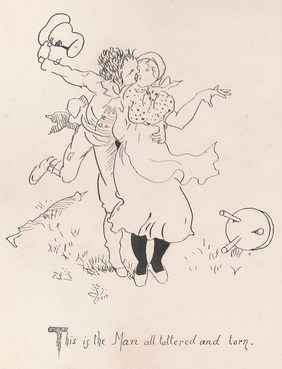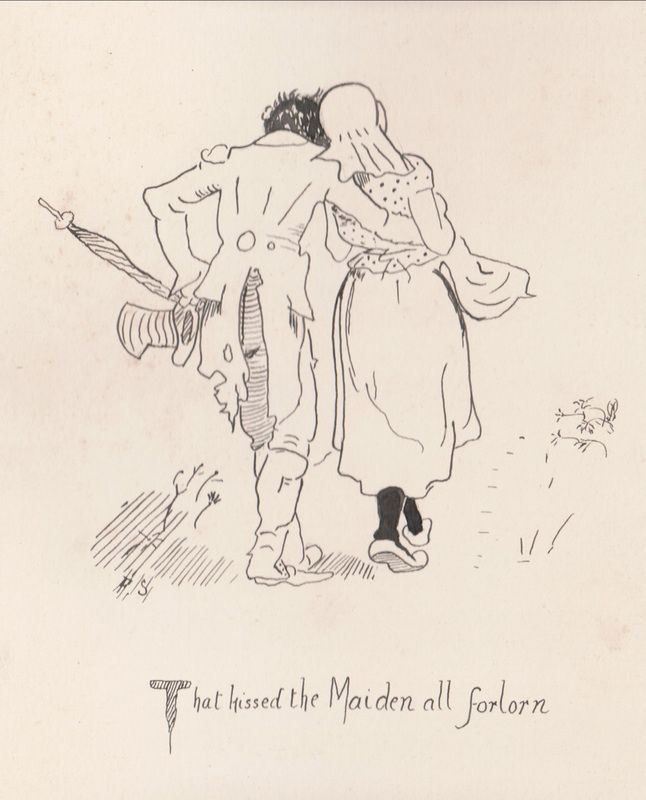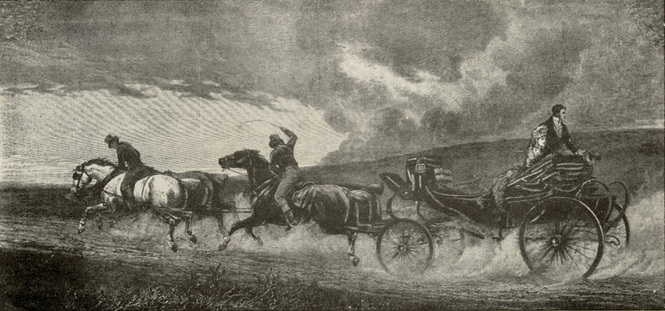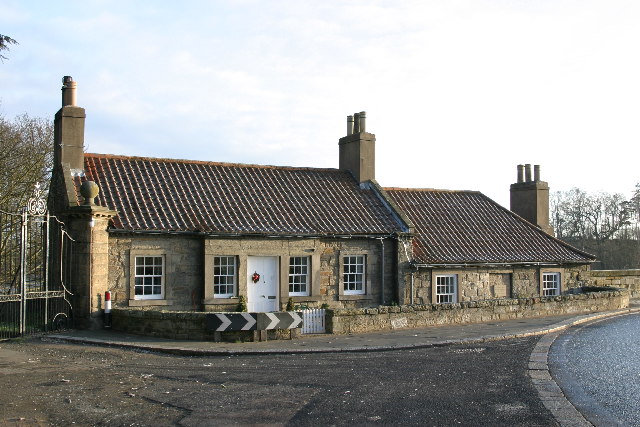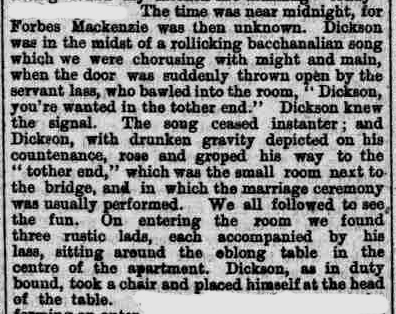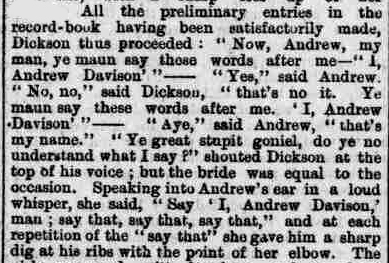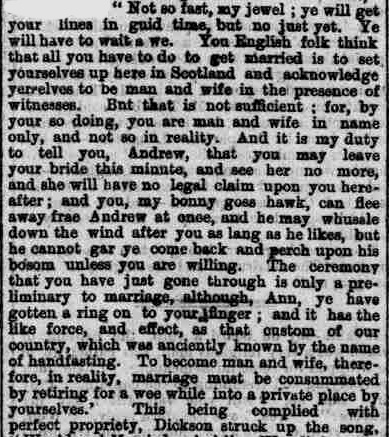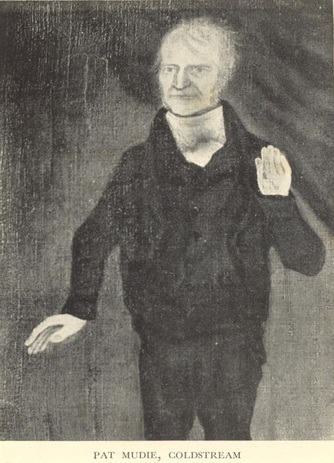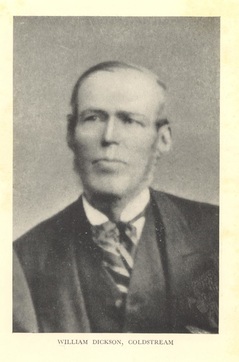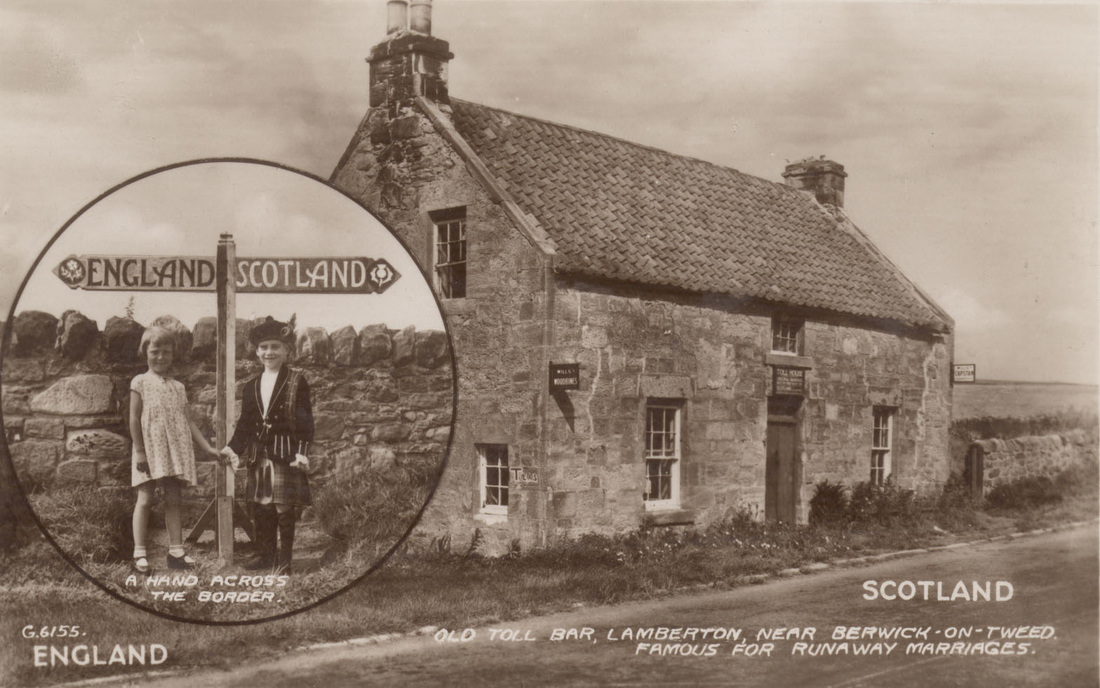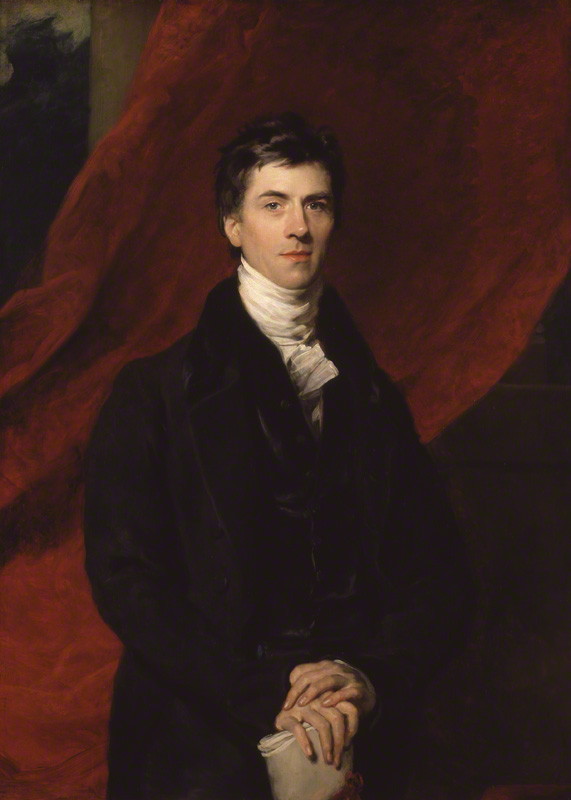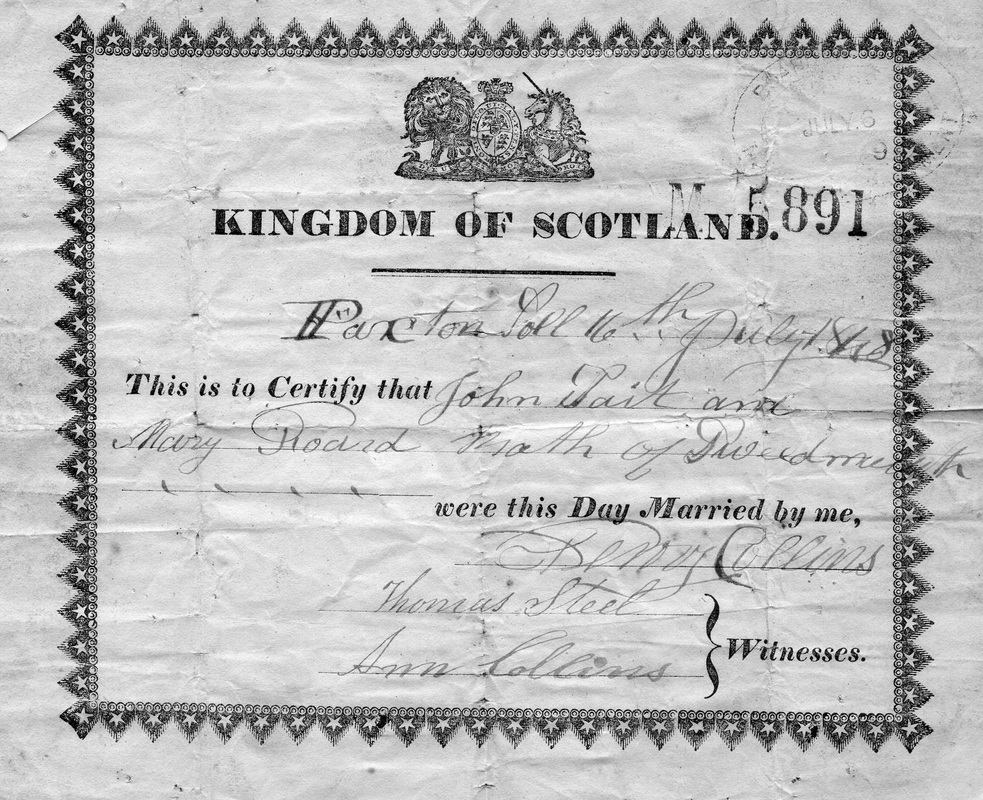IntroductionAs a researcher by far the most frequently asked question I receive concerns marriage records, or indeed the lack of them. Whilst the terms “clandestine “ or “elopement” conjure up images of a hopelessly romantic nature, the term “irregular” infers something seedy and underhand. This is simply not the case, regardless of the derogatory comments entered in the baptismal registers for the children resulting from such unions by mealy mouthed ministers.
Marriage in England – Clandestine & Otherwise. In the years before the Hardwick Marriage Act of 1753, for a marriage to be legal it merely required to be overseen by a minister of the Established Anglican Church. In many cases this was preceded by the calling of banns in Church or the acquisition of a marriage licence. However these methods were discretionary rather than mandatory until the passing of the “Marriage Duty Act of 1695”. This effectively prevented marriages taking place in Church without banns or licence which came at a cost (tax) and heavily penalizing any clergyman who did otherwise.
Marriage in Scotland – Regular & Irregular.
Here for a marriage to be deemed ‘regular’ it merely required the ceremony to be carried out by an ordained minister, and to be preceded by proclamation or Banns. Parental permission was not required, girls as young as 12 and boys of 14 could legally marry without it. This rule remained in force until 1939, when the age of consent was raised to 16 for both sexes. Neither was it a requirement for the couple to marry in a Church. It was not uncommon for the ceremony to be carried out in the Bride’s home, or the parish Manse. Irregular‘Irregular’ marriage in Scotland did not require any of the above to be recognised as a legal entity. Nor did it require residency until the reform bill known as the “Cooling Off Act” was passed in 1856, introduced by Lord Brougham, the Scottish born former Lord Chancellor. Prior to this date to be recognised by law, an ‘irregular’ marriage came in three basic forms:
Whilst frowned upon by the Scottish church, it was tolerated for fear that if not recognised by law, the couple involved would be deemed ‘living in sin’. References to ‘irregular’ marriages regularly appear in Scottish Kirk Session Minutes, when the couple would be reprimanded and either be married again or required to pay a fine, or sometimes both. As such I fear the bemoaning by the Church was often attributable to its loss of revenue rather than the absence of the Almighty! Thus from 1754, Scotland provided English sweethearts with the opportunity for elopement. The fame of Gretna Green spread and became synonymous with clandestine marriages. However, Gretna was not alone, and neither was it unique to English couples unable to gain parental consent. Border crossing points along the Eastern side of the country sparked up a brisk trade in such marriages too, Lamberton Toll, Coldstream, Paxton Toll, Mordington to name but a few. This system of marriage also appealed to other social groups and members of dissenting religions, particularly Presbyterians. It was particularly popular with agricultural workers who needed to marry in a hurry, because of the lack of opportunity presented by the remote rural nature of the Border region. The twice yearly ‘Hiring’ fairs, market days and holidays would see a surge in business in towns throughout the Borders. A former jeweller in the town of Berwick states that it was not unusual to sell 12 – 18 rings on such mornings, for use later that day at Lamberton Toll. A fabulous, and highly amusing, if somewhat lengthy article appeared in the ‘Berwickshire News and General Advertiser’ on 12 March 1889. It is the recollection of a former incumbent of Coldstream Toll, then called the Bridge Inn, whose backroom was used for the purpose of irregular marriage (and a further room for consummation thereof) on many occasions, in this case the marriage of Andrew Davison & Ann Scott of Shidlaw Farm, with William Dickson presiding. It has gone midnight and the narrator and Coldstream “priest” Dickson have already enjoyed a profitable evening and are now both evidently somewhat in their cups: Then we come to exchange of vows and Andrew’s declaration: Vows exchanged, the bride, who had been rather vociferous throughout then demands her certificate from Dickson, who gently reminds her that as yet the job is only half done: From it we can glean a host of information about the, ‘who, where, when and why’ and the celebrants calling themselves “priests” who conducted such proceedings. We learn for example that the spring hirings in England were a particularly busy period with up to 10 “cases”, presenting themselves for marriage during the night and hours of darkness on Fair Day at Wooler, alone. Our narrator also confirms that this practice was equally popular amongst the local rural Scottish population residing on the north side of the Tweed.
The last entry in Dickson’s register appears on 25th July 1857. He is known to have officiated at 1,446 weddings. It is believed there may have been many more. “A Riotous Affray at Lamberton Toll” Another marriage documented in the newspapers albeit for the wrong reasons, was the marriage of George Gibson and Ann Metcalf at Lamberton Toll on the night of 5th March 1842. Witness statements to the ‘riot’ that ensued, hold a wealth of useful information for the family researcher:
From this evidence it is possible to trace George Gibson and his wife Ann through the census records. In 1851 George is a miner at Greenwich Colliery, Scremerston, he was born in Ancroft, Northumberland in 1817, Ann was born circa 1821 at Tweedmouth, and they have three children. In 1861 they have moved to Broomhill Colliery, Morpeth and have five children. In 1871 they are residing at West Chevington and the census states “formerly a miner, out of health”. A death record for a George Gibson appears in the October Quarter of the same year in Morpeth. He was survived by his wife Ann, at least two of his children, sons Thomas 28, and John 19, both coal miners. There is a potential baptism for Ann in Tweedmouth in 1820 to parents John & Catherine Metcalf. Two of Ann Gibson’s daughters were named Catherine. However, the final twist comes from the 1841 census. George Gibson appears next door to George & Catherine Metcalf and family in Unthank Square, Tweedmouth. Occupations coal miners. Whilst Ann is not present the evidence that this is indeed her family is compelling, especially when backed up by witness statements to their riotous nuptials from other residents of Unthank Square! A Change in the Law and it's Economic Impact The narrator in the newspaper article of 1889 remonstrates on the change of the law regarding the 21 day residency rule introduced in 1856, with the passing of Lord Brougham’s ‘Cooling Off Act’. Cool off it did but the practice of irregular marriage continued, albeit on a much lesser scale until its abolition in 1939. The change in the law obviously hit his pocket hard. He says: “My malison be upon all those who took “airt and pairt” in the making of a law which deprived me and many more of a considerable amount of income and poor folks the pleasure of getting cheaply married without the compulsory interference of a busybody in the shape of a minister or a registrar who cannot tie the marriage knot one whit tighter that I have seen it done in my ain house in the auld fashioned way.” Ironically, tradition has it that Lord Brougham himself was married in Coldstream under the old system circa 1819 at the ‘Newcastle Arms Inn’, but as ever there is no surviving written record! Further Reading & Henry Collins Henry Collins was another renowned border “priest”. His registers from “Marriages at Lamberton Toll 1833 to 1849” have been transcribed by Northumberland & Durham Family History Society and are available for purchase, as are the Registers of George Lamb (1804-1816) and George Sharpe (1849 – 1855). Collins was an uncommon character and a degree of lateral thinking is required when deciphering his entries. His spelling is random to say the least. The surname of the bride on the certificate above is actually ‘Ford’! You can also expect to find place names such Cockburnspath written as Coppersmith, Glororum as Gloweram etc. Berwick Record Office also has the above records, and in addition has transcribed irregular Border marriage entries in local newspapers, 1808-1864 and holds a few surviving certificates including the one above. http://www.experiencewoodhorn.com/berwick-record/
Or you could of course just ask me of course, as I hold these records within my ever growing collection, which also includes Coldstream Bridge Marriages 1793 – 1797. A simple email will suffice! A comprehensive list of where to source other records can be found at: https://www.nrscotland.gov.uk/research/guides/birth-death-and-marriage-records/irregular-border-marriage-registers#current whereabouts
51 Comments
Jane Slade
30/7/2015 01:21:55 pm
Did you know of the engraving in stone outside the house on Coldstream bridge- ' Ginger beer sold here and marriages performed' ? It was there in the 60's - I don't know when it was removed.
Reply
Dean Weatherston
30/7/2015 02:11:20 pm
Where could I find out more information about William Dickson? I have been researching my family tree and going by the name dates and trade I think he may be my 4th great grandfather.
Reply
Susie Douglas
6/8/2015 01:48:33 pm
Apologies Dean - I have only just spotted your comment. I will get back to you with some websites you may find useful.
Reply
Margaret Paterson
31/7/2015 01:35:26 pm
My mum and dad eloped to Gretna Green from Brought on in Peebleshire on a motor bike in February 1937both aged 23 ,they were married in the original blacksmiths smithy over the anvil ,no fancy chapel or register office then ,they had to have their marriage solemised in the church after they came home again
Reply
Susie Douglas
6/8/2015 01:52:54 pm
What a fabulous story! I bet it was chilly on the motorbike.
Reply
Heather Miller Shiell
3/8/2015 07:13:06 pm
Looking for the marriage of Andrew Shiell and Jennet Lamb in the 1840's before the emmigrated to Canada.
Reply
Susie Douglas
6/8/2015 01:51:18 pm
Hi Heather, apologies for not replying sooner. I shall have a look in the indexes and get back to you.
Reply
Heather Miller-Shiell
6/8/2015 02:15:47 pm
Thank you!
Heather Miller-Shiell
1/9/2015 10:41:04 am
Reply
Mark Ewen
26/9/2015 07:24:47 am
Hi. Really interesting article. Where would I find more information about Mr Ewan, tailor or Coldstream. We believe he may be a distant relative before the family headed south to Newcastle. Thank you.
Reply
Angela Boon
13/6/2016 05:20:10 pm
My ancestor Marion Brown emigrated with her husband to Australia in 1857 but according to this statement in her 1881 divorce proceedings was married at Coldstream: "We Robert Walker residing in Edinburgh in the Parish of North Leith and county of Edinburgh and Marion Brown residing at Edinburgh in the Parish of North Leith and county of Edinburgh do hereby accept of each other as Husband and Wife as witness our hands at Coldstream this fifteenth day of August 1853 before these witnesses:- Robert Walker Marion Brown and William Dickson John Foster Alexander Oliver". Would there be a record of this marriage entry please? Kind Regards Angela
Reply
Graham Divall
7/8/2016 06:39:05 pm
Susie, just discovered your wonderful article. Fine illustrations. The Divall family has a tale of Samuel Divall and Lillian Francis Ann King eloping in about 1877. Nobody has any details, of course, but the story is supported by us being unable to find any marriage certificate for Samuel yet we can for all five of his brothers and sisters. Samuel lived in Hackney, London and was from a very poor family. It seems to me very unlikely they could afford the cost of eloping to the Scottish boarders but, from your very kind offer, I be most grateful if you could
Reply
Graham Divall
26/1/2017 07:41:48 am
Sussie: do your records show any entry for Samuel Divall and Lilian King? Thanks.
Reply
Derrick Small
25/1/2017 02:55:20 pm
I hold a copy of the marriage certificate of my great great grandparents
Reply
Graham Divall
26/1/2017 07:40:12 am
Derrick. Thank you for sharing that. The certificate must be a treasured item in your family history.
Reply
18/10/2017 10:57:32 am
Hello Susie,
Reply
Susie Douglas
23/10/2017 11:24:05 am
Hi Bill
Reply
Graham Divall
11/12/2017 11:35:05 am
Hello Susie. Do you have any advice or comments re my earlier enquiry? Thanks
Reply
Susie Douglas
12/12/2017 10:09:05 am
Hi there Graham
Reply
Gillian Haggarty
5/1/2018 11:45:12 am
Really interesting read!
Reply
sylvia robinson
10/8/2018 07:50:54 pm
Where would my ancestors have been married in Lilliesleaf or Chapple in 1740, the banns having been read a fortnight before?
Reply
Carol Stewart
28/3/2019 11:17:49 pm
I stumbled across this page by accident but wonder if you might be able to shine any light on the existence of a marriage having taken place between my 2x great-grandparents in Coldstream, Berwickshire. Their names were William Oliver and Janet Scott or Dewar (she was illegitimate and I think Scott may have been her father's surname).
Reply
Susie Douglas
29/3/2019 08:04:31 am
Hi there Carol
Reply
Carol Stewart
29/3/2019 09:51:23 am
Thanks Susie for confirming this for me. The Oliver line from Coldstream is one line which has been a little neglected by me in my genelaogical research, for the reason that I have struggled to find a number of birth, marriage or death entries which would confirm dates and places. OPRs are a bit of a hit or a miss... but this one puzzled me as the date should have meant that the marriage would have been recorded as a Statutory Marriage, as it took place after 1855. Any idea why that has not happened? Does it indicate that it was an irregular marriage and therefore not recorded?
Bill Richardson
29/3/2019 09:31:18 am
Just to confirm what Suise reports.. The report is in a book:
Reply
Carol Stewart
29/3/2019 09:53:36 am
Thanks Bill,
Susie Douglas
29/3/2019 10:24:01 am
Hi Carol & Bill
Reply
Carol Stewart
29/3/2019 10:32:05 am
Hi Susie,
Reply
Donelle James
16/4/2019 05:04:48 pm
I am hoping for help. My ancestor, Thomas Robson married Elizabeth (?) on the longest day of the year in 1854. This is from newspaper reports of Thomas’s trial for Wife Poisoning. One report says 21June 1854. Thomas was convicted & transported to Australia in Feb 1856. I have no record of his birth, possibly 1834 to George & Elizabeth, with such a fairly common name this can not be confirmed. According to the newspaper report, Jan 14, 1856, he did have a sister, no name given, she was living at Cox-lodge. I am really hoping to find this record & his wife’s surname. Thank you for any assistance you can give me.
Reply
Susie Douglas
16/4/2019 06:01:20 pm
Hi Donelle
Reply
9/7/2019 02:45:30 pm
Hi Susie:
Reply
Chris Wild
10/12/2019 02:36:27 pm
Found this blog after finding my 5th Gt grandparents were married at Lamberton Toll in 1802. The marriage at Lamberton was recorded on the entry for their marriage at their home church of Golden Square Scotch Church United Secession Presbyterian Church. The "priest" was recorded as Jno BLACKHALL, Minr. Thought this might be of interest
Reply
du
16/1/2020 10:13:52 pm
Hi Susie,
Reply
Matt Bankhead
12/6/2020 02:15:24 pm
My neighbour's great great grandparents Robert Bryce, a papermaker, and Agnes McGechan were apparently married at Lamberton Toll, Feb 1st 1844, but it took 19 years before this fact was recorded on a child's birth registration (Grace Bone Bryce). Their first born, James , was baptised Oct 20th same year by Rev Ure, minister in Ayton .
Reply
Susie Douglas
28/4/2021 06:12:21 pm
Hi Matt
Reply
3/3/2021 01:37:42 pm
Am researching marriage of William Tait and Margaret Thompson, reported by Berwick Advertiser as being on the 7th July 1949. Do you hold any further information Mongst your indexes?
Reply
Susie Douglas
28/4/2021 06:04:26 pm
Apologies Patricia - I have only just seen your message. I think you mean 1849, he of Belford Road Surveyor and she of Shipley. That is all I have re the marriage, but if you need further help do come back to me.
Reply
Robert Bellenger
8/10/2021 04:44:19 am
Hi Susie,
Reply
Joan Manuel
6/12/2021 10:25:18 pm
Hi, Susie
Reply
Susie Douglas
7/12/2021 09:39:17 am
Hi Joan - there is indeed an entry in the indexes for Coldstream Bridge 1793 - 1797 for the marriage you seek. 'Joseph Rule of the Parish of Wooler & Ann Herberson of the Parish of Doddington' date 9 November 1796. No name of celebrant recorded. Hope this helps.
Reply
Carol Cunningham
17/3/2022 10:56:13 pm
Hello please could you confirm whether an irreguar Marriage took place - is there a record of a marriage between Andrew Huntly and Janet McLean in October1928 at Lamiberton Toll?
Reply
Susie Douglas
18/3/2022 08:57:52 am
Hi there Carol
Reply
Carol Cunningham
18/3/2022 10:06:35 pm
Hello Susie, re. Andrew Huntly and Janet Mclean - oops my clumsy typing, I did mean 1828. Thanks for your response, I have details of their irregular marriage recorded in 'Old Parish Registers Marriages Cockburnspath'31/10/1828 as having taken place at Lamberton Toll - could you please perhaps give me any pointers as to where else I might try,to find their marriage certificate? thanks.
Reply
Susie Douglas
19/3/2022 07:16:45 am
Hi Carol
Reply
Carol Cunningham
19/3/2022 11:01:05 am
Thank you Susie very much for all your information and sharing your knowledge, during my research I am learning something new all the time!
Paul Scott
5/5/2022 01:10:31 pm
I’m wondering if there’s an irregular marriage recorded for a George Brownlees (spelling varies) around 1805-1813 or so?
Reply
Donna Hay
19/4/2024 01:52:18 am
Thanks for the reat article. I especially found the comment that an irregular marriage was not preceded by banns and/or was not by an ordained minister.
Reply
Susie Douglas
19/4/2024 05:21:56 pm
Hi Donna - Thank you for your message. Cornhill is in England and therefore the parish Church is Anglican. The vicar there could not, under English law, perform an 'irregular marriage'. He could however, have married them according to the rules of the Anglican Church, which to the Church of Scotland was just, if not more distatesful. There are instances of couples crossing the border and being married there but William Hay is not amongst the recoerds.
Reply
Paul Scott
19/4/2024 09:42:48 am
Following up my question of 5 May 2022, I should have included that George was married to an Isabella, they spent most of their life in the Cornhill area.
Reply
Leave a Reply. |
AuthorSusie Douglas Archives
August 2022
Categories |
Copyright © 2013 Borders Ancestry
Borders Ancestry is registered with the Information Commissioner's Office No ZA226102 https://ico.org.uk. Read our Privacy Policy
